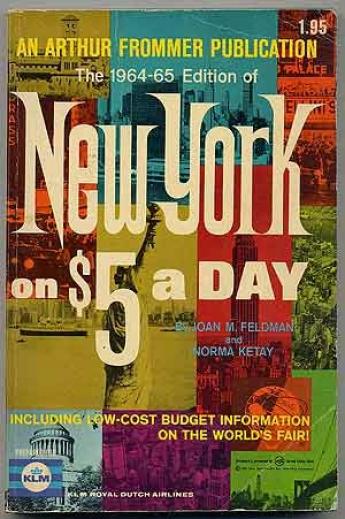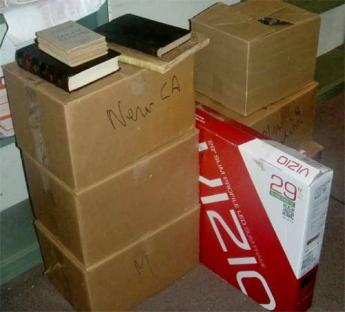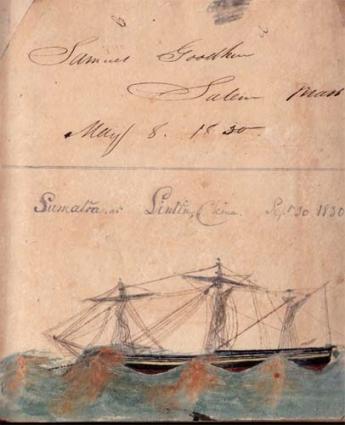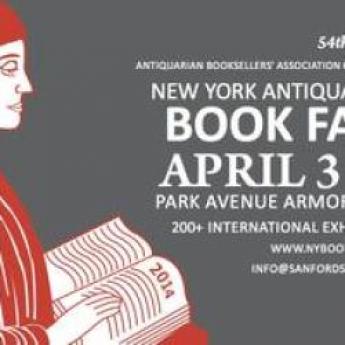Antiquarian Booksellers' Association of America Ten Pound Island Book Company
Decisions, Decisions - 54th Annual New York Antiquarian Book Fair

By Greg Gibson
This is always a rough week for me. The New York International Antiquarian Book Fair is hauling into view (April 2-6), and there are decisions to be made. What stays? What goes? It's the biggest fair on the circuit and it has the greatest upside in terms of profit potential and meeting new customers. It's also the most expensive of the American fairs, and big city livin' is a real drain on the pocket book.
It would make sense to set aside my best stock for an event such as this, but I'm not a hoarder by nature, and the demands of cash flow must be honored.
So, when good material comes in I think, "This would look great in New York." Then I think of somebody to quote it to, and if it truly is as good as I think it is, they buy it, and I get a hole in my showcase where I'd imagined that item might fit. (Payment may or may not arrive within 30 days.)
Then I have to decide which of the remaining new items are interesting enough to take to the show, and how much I should lard that material with older things from my stock – wonderful items that, for some reason have not yet sold. We all know that booksellers have second sight when it comes to fresh stock. Even if they've never seen my books before, seasoned dealers will always go straight for the fresh material. It's uncanny. So the more old stock I bring, the less the dealers will be involved. But am I doing this show for dealers?
Good question! My sales to dealers account for about a third of my annual gross. Their trade is not to be taken lightly. But at an event like this, I want the heavy hitters in the retail trade and the well funded librarians to see the best of my top notch material, regardless of how "fresh" it may be. I should just start from the top down and bring my 100 (or whatever the number might be) best items.
And where will we dine, and with whom? And what about parking? And will I find enough to buy on the floor during setup – yes, there are books to be bought at the New York show – and will they be the right books? And will I be able to pay for them, let alone sell them later?
Much nocturnal tossing and turning ensures. About the only thing I don't have to worry about is my wardrobe – a source of anxiety for some, I'm sure. I've been wearing the same set of bookfair clothes for a decade. Yes, they're getting ratty and moth eaten, but so am I.
Anyway, here's a no-brainer for New York – one less decision I have to make:
Manuscript. Sea Journal of Samuel Goodhue, Aboard the Ship Sumatra, Salem to Canton, 1830-1831. Watercolor illustrations. Sq. 8vo. About 150 pages of manuscript entries.
This journal was kept by Samuel Goodhue of Salem, an officer aboard the Ship Sumatra, commanded by old China Trade hand Captain Charles Roundy. The Sumatra made regular, and extrememly profitable, (Putnam, "Salem Vessels", pp. 113-114) runs to Canton during this period. The year before she had delivered William Low, his wife, and his niece Harriett to China, where Low was to manage the powerful American trading firm Russell & Co. Harriett Low kept a journal of her stay in China, and she recorded her passage in the Sumatra under Captain Roundy (the journal was subsequently published in 2002 as "Lights and Shadows of a Macao Life"). She mentions the arrival of the Sumatra in 1830, visits the ship and entertains Captain Roundy, who offers to take her back to Salem with him (Low vol. 1, p. 213). However, she never writes about what the ship was actually doing in China. Samuel Goodhue's journal clears that question up in a single entry. “Feb 4 - This day discharged all our opium on board of the Bark Lintin.”
Robert Bennet Forbes, whose arrival in China is noted in this journal, had just taken command of the opium receiving ship Lintin and the Sumatra was supplying it. Eighteen pages are devoted to their stay at Lintin and their activities there. Another twelve pages narrate their journey upriver to Canton. Vessels and captains are named and "receiving ships" are identified. The journal is well written and quite detailed about the journey out and back, as well as a side trip to Manilla and stays at Lintin, Canton, and Macao. It mentions current events and details of life there, such as the murder of an English captain in Canton, and it details their trading activities (rice from Manilla for tea in Canton). It also features water color views of Trinidad, Java Head, St. Barbe, several island groups in the Indian Ocean, a whale, two views of the ship, and a funereal set piece commemorating the death of a shipmate. A rare and important journal from an interesting period in the American China Trade, rich in detail and historic significance. Bound in quarter calf over marbled boards, rebacked with hinges renewed. Text and illustrations in very good condition. $20,000
54th Annual New York Antiquarian Book Fair
April 3 - 6, 2014, Park Avenue Armory
VIP Preview: Thursday 5 – 9 pm
Opening hours: Friday noon – 8 pm, Saturday noon – 7 pm, Sunday noon – 5 pm
For more information please visit the official website!
Learn more about the New York Rare Book Week!
(Posted on Bookman’s Log, presented here by permission of the author.)



